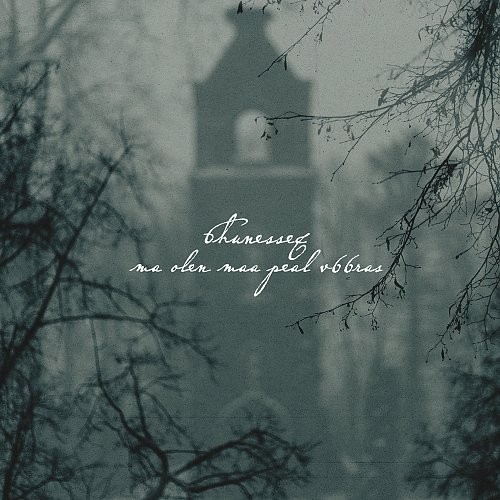
© Ekvilibrist
Long live the pipe organ! 6hunesseq (pronounced ɤhunes:e, by the way) means “moisture” in Võro, a southern Estonian variant of the Estonian language. The four musicians came together through their shared fascination for traditional Estonian folk chorales in 2021. “There was an event where all Estonian folk music students from the various music colleges came together,” recalls pipe organ player Kaisa Kuslapuu. “I got to know these two fantastic singers and immediately fell in love with their voices.”
“What brought us together was also the material we chose: It was the old Estonian folk chorales and folk songs, which we all find very fascinating because the melodies are so beautiful and artistic,” adds singer Marion Selgall.
On their album “Ma Olen Maa Peal Võõras” (As a guest on earth I wander), the musicians bring not only folk chorales but also the Runo style into the present day. “Runo Songs are more than 2,000 years old,” says Selgall. “There are some mythical elements here. The music is meditative and the melody is usually simple. You can immerse yourself in this tradition and let yourself be carried away.”
Greta Liisa Grünberg sings and plays the horsehair harp in the band. “I am driven by a longing for a connection with my culture, with my past, simply a connection with my roots,” she says. “I have always searched for something that has a deeper meaning.”
For centuries, music has brought people together in Estonia. “Music was a way to forget the hard work in the fields,” says Grünberg. “People played a lot of music at home.” Estonians are very proud of their independent culture. When Estonia regained its independence in 1991, there was a renaissance of Estonian folk music. “Maybe our music makes people think or feel something they haven’t felt for a long time,” says Grünberg, “like a connection with something very beautiful.”
In the music of 6hunesseq, the rich world of folk chorales meets the pipe organ and the archaic sounds of the talharpa and the violin. The latter two instruments are often used in traditional Estonian dance music. The interplay of these different sounds and timbres creates a meditative yet powerful soundscape. 6hunesseq revive an almost forgotten style of traditional Estonian music.
Many of the album songs were collected in the old settlements of the Estonian Swedes, where the talharpa was often played from time immemorial. “The process of selecting songs for the project was simple – the melodies and lyrics of these nine songs fascinated us the most during our first rehearsals. In addition to the folk chorales, there are also four Runo songs on the album.”
The musicians:
Marion Selgall (vocals, tambourine)
Greta Liisa Grünberg (vocals, talharpa, self-made frame drum)
Maria Mänd (violin, talharpa, vocals)
Kaisa Kuslapuu (pipe organ)

Year of Release: 2024
Catalogue-Number: NN179 / NN179LP